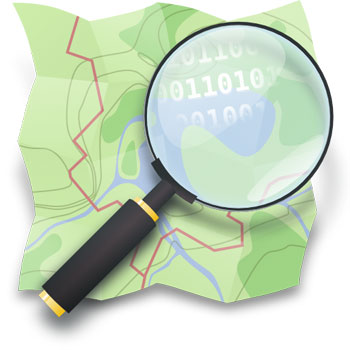Tyler Bell
Ten years of OpenStreetMap
OSM is moving out of its awkward adolescence and into its mature, young adult phase.
 Next to GPS, the most significant development in the Open Geo Data movement is OpenStreetMap (OSM), a community-driven mapping project whose goal is to create the most detailed, correct, and current open map of the world. This week, OSM celebrates its 10th birthday, which provides a convenient excuse to highlight why its achievements to-date are amazing, unusual, and promising in equal parts.
Next to GPS, the most significant development in the Open Geo Data movement is OpenStreetMap (OSM), a community-driven mapping project whose goal is to create the most detailed, correct, and current open map of the world. This week, OSM celebrates its 10th birthday, which provides a convenient excuse to highlight why its achievements to-date are amazing, unusual, and promising in equal parts.
When the project was begun by Steve Coast in 2004, map data sources were few, and largely controlled by a small collection of private and governmental players. The scarcity of map data ensured that it remained both expensive and highly restrictive, and no one but the largest navigation companies could use map data. Steve changed the rules by creating a wiki-like resource of the entire globe, which everyone could use without hinderance. Read more…
The Four Frictions
Navigating Inefficiencies in Third-Party Data Use
Incorporating third-party data into your business is always a headache. Issues of format, price, rights, format, and accessibility consistently introduce inefficiency, slow things down, and generate excess heat, so it’s not inappropriate to refer to them as frictions.
Third-party data is hugely valuable and implementation need not be onerous. Using geodata as an exemplar, I’m outlining these four frictions here so we can stare them in the face, note what needs fixing, and suggest how best to address them. The good news is that these issues are not insurmountable, and we seem to be moving in the right direction.
That’s it — I’m taking my data and going home
We are simply not good at playing with others when it comes to data
Russia’s railway gauge is different from Western Europe’s. At the border of the former Soviet states, the Russian gauge of 1.524m meets the European & American ‘Standard’ gauge of 1.435m. The reasons for this literal disconnect arise from discussions between the Tsar and his War Minister. When asked the most effective way to prevent Russia’s own rail lines being used against them in times of invasion, the Minister suggested a different gauge to prevent supply trains rolling through the border. The artifact of this decision remains visible today at all rail crossings between Poland and Belarus or Slovakia and Ukraine. The rail cars are jacked up at the border, new wheels inserted underneath, and the car lowered again. It is about a 2-4 hour time burn for each crossing.
Per head, per crossing, over 170 years, is a heck of a lot of resource wasted. But to change it would entail changing the rail stock of the entire country and realigning about 225,000 km (140,000 mi) of track.
Talk about technical debt.
Data suffers from a similar disconnect. It really wasn’t until the advent of XML 15 years ago that we had an agreed (but not entirely satisfactory) mechanism for storing arbitrary data structures outside the application layer. This is as much a commentary on our technical priorities as it is a social indictment. We are simply not good at playing with others when it comes to data.
Snap to the graph, not the grid
Location coordinate data lacks important context.
Coordinate pairs are regular and orderly, but they are entirely ambiguous when used to represent more conceptual places like states, cities, stores and neighborhoods.
Big Data: An opportunity in search of a metaphor
Big data as a discipline or a conference topic is still in its formative years.
Big data is a massive opportunity, but the language used to describe it ("goldrush," "data deluge," "firehose," etc.) reveals we're still searching for its identity.
Where the semantic web stumbled, linked data will succeed
Linked data allows for deep and serendipitous consumer experiences.
Linked data can be realized without the purity of semantic annotation, but a focus on consumers gives it a better shot at adoption. It begs the question: Why invest in difficult technologies if consumer outcomes can be realized with current tools and knowledge?
Toward a local syzygy: aligning deals, check-ins and places
Check-ins are only the beginning. Here's what lies ahead for local.
The check-in is hardly the apogee of the local consumer experience. It works, for now, but it won't be the long-term solution for customer/business relationships and physical point of presence. So what will replace it? Here's a look at the local sector's near-term future.
APIs launched at Where 2.0: a pocket guide
Where 2.0 has become a launch-pad for new geo products. As a sign of the times, these announcements focus on APIs rather than the usual feature-increments or partnership propaganda (we geo folk always prefer the Walk over the Talk). Here's a handy reference list in no particular order: Placecast Match API The free service "simplifies the process of de-duplicating and…
Check out C3 cities: your eyes will thank you
The practicality of 3D content is often overstated; I’ve not yet found an example in the geo world where 3D genuinely compliments, rather than hinders, usability. The high-resolution city models produced by C3 attracted significant attention at this year’s Where 2.0, and may in time prove to be the exception to the rule.
